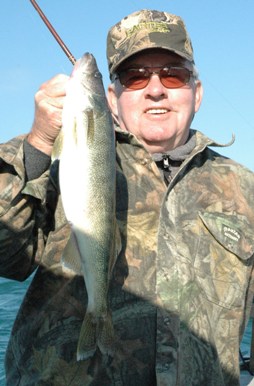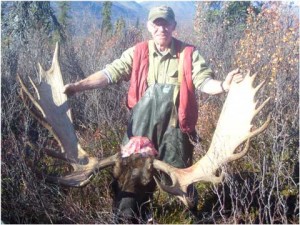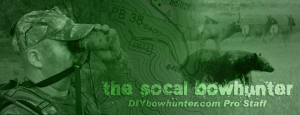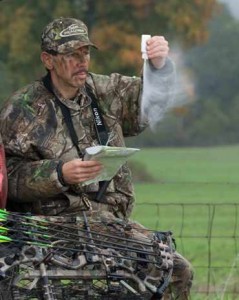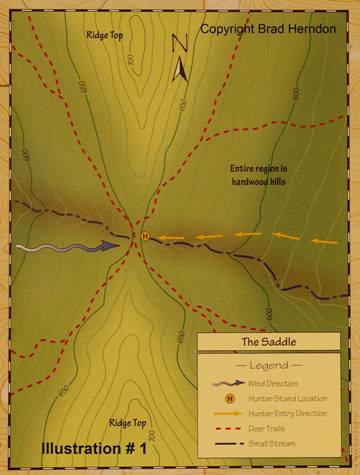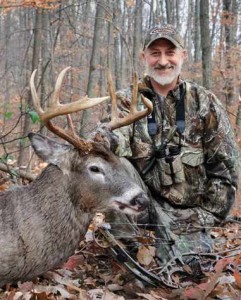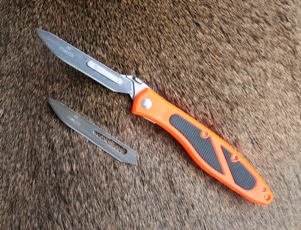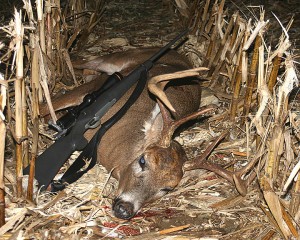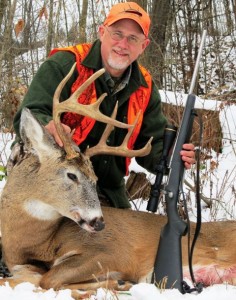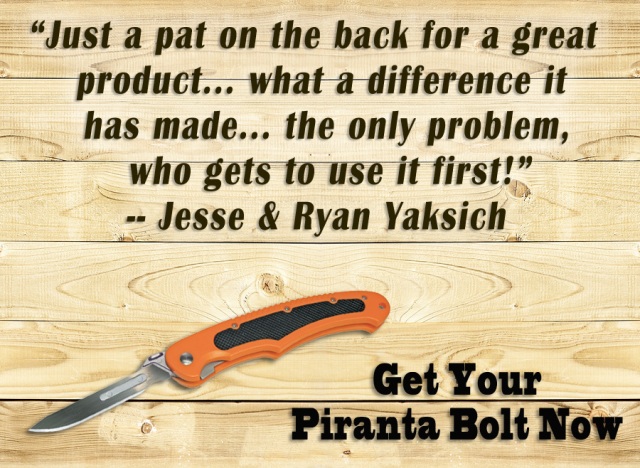How to Catch Fall Walleye
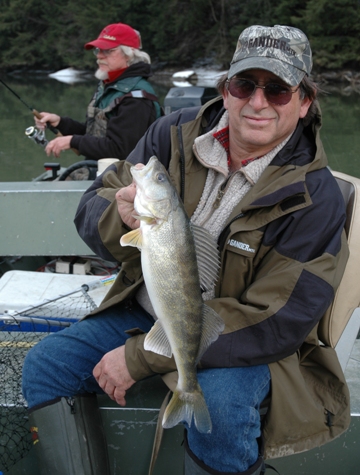
In summer the typical walleye in this pool is 14" - 16" long. During fall, this 19" walleye caught by Larry Snavely is about average.
Gone are the sweltering hot days of summer, replaced by frosty mornings, colorful hillsides, and hungry walleye. Life does not get much sweeter.
Anglers have been trying to explain the fall walleye phenomenon ever since they have been fishing for walleye. Among the more common explanations, walleye are taking advantage of the last nice weather to store up energy for winter.
Another, which alludes to the fact that larger female walleye seem to be more susceptible to anglers during fall, explains that walleye are putting on fat in preparation for the early spring spawn.
More likely is a mathematical explanation. There is considerably less natural forage available during fall since walleye and other predators have been thinning bait fish numbers all summer when their metabolic rate is at its fastest. This makes them more susceptible to anglers’ offerings. Metabolisms are still high until at least mid-fall, but the food supply is minimal.
Very few of the things that happen in nature result from just one factor. Combining with less natural food, walleye seem to be easier to find during fall. Then, and this may be the best thing about the whole situation, walleye will settle into a location and stay there through winter. As long as the weather allows, and as long as you can tolerate the weather, you can keep going back to the same hot spot for a few months.
This is more of a river pattern than it is a lake pattern, although walleye fishing tends to also be very good in lakes through fall. It is a river pattern because throughout much of the best walleye range lakes freeze over at some point, leaving ice-fishing as the only type of fishing. That is great fishing, however many walleye anglers would much rather hold a rod in their hands while sitting in a boat or walking along a river bank.
Dam Tailwaters – A Fall Hotspot
Fall walleye hot spots tend to have gentle to moderate current. Fighting current expends energy, and energy is harder to come by during fall. This gets complicated, though, because the only way anglers can judge current is by looking at it from above the water. That provides good clues, but it does not tell the entire story.
The complicating factor is the effect that bottom composition has on current. The rougher the bottom the more it tends to slow the current. Demonstrations with dies shows that the current is deflected by friction with the bottom, not so much slowing it as it changes the direction of the current to swirls which lessen downstream push. If that is a bit complicated, it is enough to know that rough bottom decreases downstream current.
For many years most of my winter walleye fishing took place at the Kinzua Dam tailwaters. If you have a dam in your area check it out for walleye. Even if the river or creek that is dammed is only a marginal walleye fishery, the dam might create a good fall and winter walleye fishery.
The reason is that, like many fish, walleye make a general upstream movement during fall, then they are stopped by the dam and congregate below it if conditions are right. They will stay there all winter. The Kinzua tailwaters is one of the best trophy walleye hot spots in the East. But during summer it is hard to catch a 15-inch ‘keeper’ there.
There are a couple of trout streams in my area dammed by flood control projects. These creeks would not even be thought of as walleye fisheries if not for fall and winter fishing in the dam tailwaters.
Dam tailwaters may be the number one potential fall walleye hot spot. Identifying others may be more difficult because they change from river to river based on available habitat. An example, in a river that supports commercial navigation fall walleye hot spots might be on the protected sides of wing dams. When walleye go on the feed, they most likely will be found along the edge of a current. We could not call this a universal pattern, though, since many rivers do not have wing dams.
Understand the Current Edge Factor
That current edge factor is a very common factor in fall walleye location. Just about every river has current edges. If not it is a lake, not a river.
Current edges are a common situation for shore-bound anglers because the edges often start immediately at the shoreline. Typical locations for current edges are bends in the river, projections of land into the current, and man-made objects such as bridge abutments.
A slight variation on the current edge occurs at the bottom of islands where two currents meet. The edge between the currents may be swirling with less downstream velocity than the water on either side.
The last fall walleye outing my late friend Larry Snavley and I shared, along with our good friend Herb Wagner, focused on the upper mid-section of a pool in a medium-size river. We approached the situation by slip-fishing, one nearly universal good river fishing tactic. It is done by anchoring and fishing around the boat, then pulling the anchor until the boat drifts into fresh water and doing it all over again. On that excellent day of fishing we hit walleye the second time we dropped the anchor to the bottom. Each of us used a simple hook and split shot terminal rig, using chubs as bait. We were fortunate to have good, lively chubs.
The pool had only mild current so we were able to fan-cast around the boat. In faster current baits would swing quickly toward a position directly downstream from the stern, so we would have been effectively covering only a quartering downstream area, a cone shape. In the mild current we could cover a half-moon shape. We could even have cast upstream, but that had been covered from the first anchored position.
Fittingly, though of course we did not know it at the time, Snavley hit the first walleye, and ended up catching the most and the biggest walleye. Neither Wagner nor I complained, there were plenty of walleye to go around and as usual we had lots of laughs.
Favorite Walleye Lures

Stick baits can be very effective for walleye fishing during fall. Key is getting them down to the walleye.
Anglers who do a lot of fall walleye fishing tend to have favorite fishing methods, a certain bait, a certain rig, a certain lure. Factor in that most anglers do this at only one close-to-home river, and it is easier to get by with just one method than in most other fishing situations.
Anglers who suggest, even argue, that one method is the best everywhere obviously have not experienced many different rivers.
Maybe the simplest of all methods is casting stick baits. Whenever I want to keep things simple and travel light I grab a small tackle box I have stocked specifically for river walleye fishing and a 7-foot, medium weight spinning rod.
The lures carefully chosen for my small tackle box include a couple of size 13 Rapala sticks, a couple of smaller stick baits with the fire tiger color pattern, a Rapala X-Rap which gets deeper than the other stick baits, white and yellow soft plastic jig bodies, and an assortment of jig heads, mostly 1/8 ounce.
Sure, I could think of several more very effective lures that would fill a much larger tackle box. But the idea here is keeping it light. Besides the rod and reel the only other fishing gear I carry is a rope stringer and a landing net.
Effective Presentations
In most fall walleye fishing situations, a slow, steady retrieve is most effective. Occasionally twitching the lure may trigger a strike.
Using a simple hook and split shot rig allows the slowest bait presentation. Sometimes it seems that walleye want to look at a bait a while before taking it into their mouths. Yet the rig can be moved much more quickly, making this a very versatile rig.
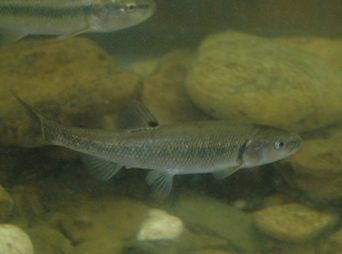
Make no mistake about it, some baits are better than others. Chubs such as this one are usually excellent, but it does vary by region.
Jigs, either tipped with bait or without bait, are used to the exclusion of all other lures and baits by many anglers.
A jig that is tipped with a minnow offers the best of both artificial lures and baits. It has the odor and taste of bait, and as long as the minnow remains lively it gives off the natural vibrations. Then it also offers the color variation of artificial lures.
Color is sometimes a major attraction to walleye, maybe more so during fall than at any other time. In stick baits my personal favorites are the standard black back, silver sides/white belly, and fire tiger. White, yellow, chartreuse, and orange/brown have been productive plastic jig body colors. Jig heads with eyes, usually a white dot with a black or red pupil, give most walleye anglers added confidence.
The next step is helping those walleye find their way to the dinner table. Walleye have a reputation as being the best eating fish in fresh water. True or not, you might as well find out for yourself.
8,346 total views, no views today


